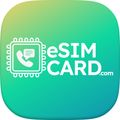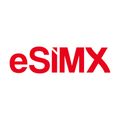手頃な予算で非常に便利なeSIM Cardは、オンラインのeSIMサービスプロバイダーです。200以上の国と地域をカバーしており、ローカル、リージョナル、グローバルのeSIMが利用可能です。1日だけの利用から1年間のプランまで、自分のニーズに合わせて選択が可能。お得なプランをぜひチェックして、旅行中の通信の悩みを一気に解決しましょう。

手頃な予算で非常に便利なeSIM Cardは、オンラインのeSIMサービスプロバイダーです。200以上の国と地域をカバーしており、ローカル、リージョナル、グローバルのeSIMが利用可能です。1日だけの利用から1年間のプランまで、自分のニーズに合わせて選択が可能。お得なプランをぜひチェックして、旅行中の通信の悩みを一気に解決しましょう。
プロモコード
香港向けeSIMCard eSIMデータプラン
よくある質問
eSIMCardは香港向けに無制限データeSIMを提供していますか?
香港向けのeSIMCardでは、実際に「無制限データ」=データ容量に上限がなく高速通信を継続できるプランは存在しません。
「Unlimited」の名前が付いたプランは1 GBもしくは2 GBを1日あたりの上限とし、これを超えると500 kbpsや2 Mbpsへ速度が制限されます。例えば「Unlimited Data For 1Day in Hong Kong」では1 GB、速度は512 kbpsに落ち込みます。
大量のデータを必要とする場合は、100 GB(90 daysまたは180 days)や50 GB(90 days)のような容量付きプランを選ぶ方が、コストパフォーマンスを考えれば有利です。
eSIMCardは香港向けに電話番号やSMS付きeSIMプランを提供していますか?
香港向けには電話番号付きやSMS対応のeSIMプランは提供されていません。eSIMCardが提示しているプランはすべてデータ通信専用で、音声通話やSMS機能はありませんが、LINEやFacebook Messenger、iMessageなどの一般的なVoIPアプリはデータ通信で動作するため、電話番号やSMSがなくても通話やメッセージの利用は可能です。
eSIMCardは香港向けにいくつのデータプランを提供していますか?
eSIMCardは香港向けに国別プランが35件、複数国プランが50件用意しており、定量データプランは61件、1日ごとのデータ上限付きプランは24件が存在します。価格はUSD4.09〜USD430.64、データ容量は1GB〜100GB、利用期間は1日〜365日の範囲で設定されています。
Summarized by Gen AI. Last updated:




